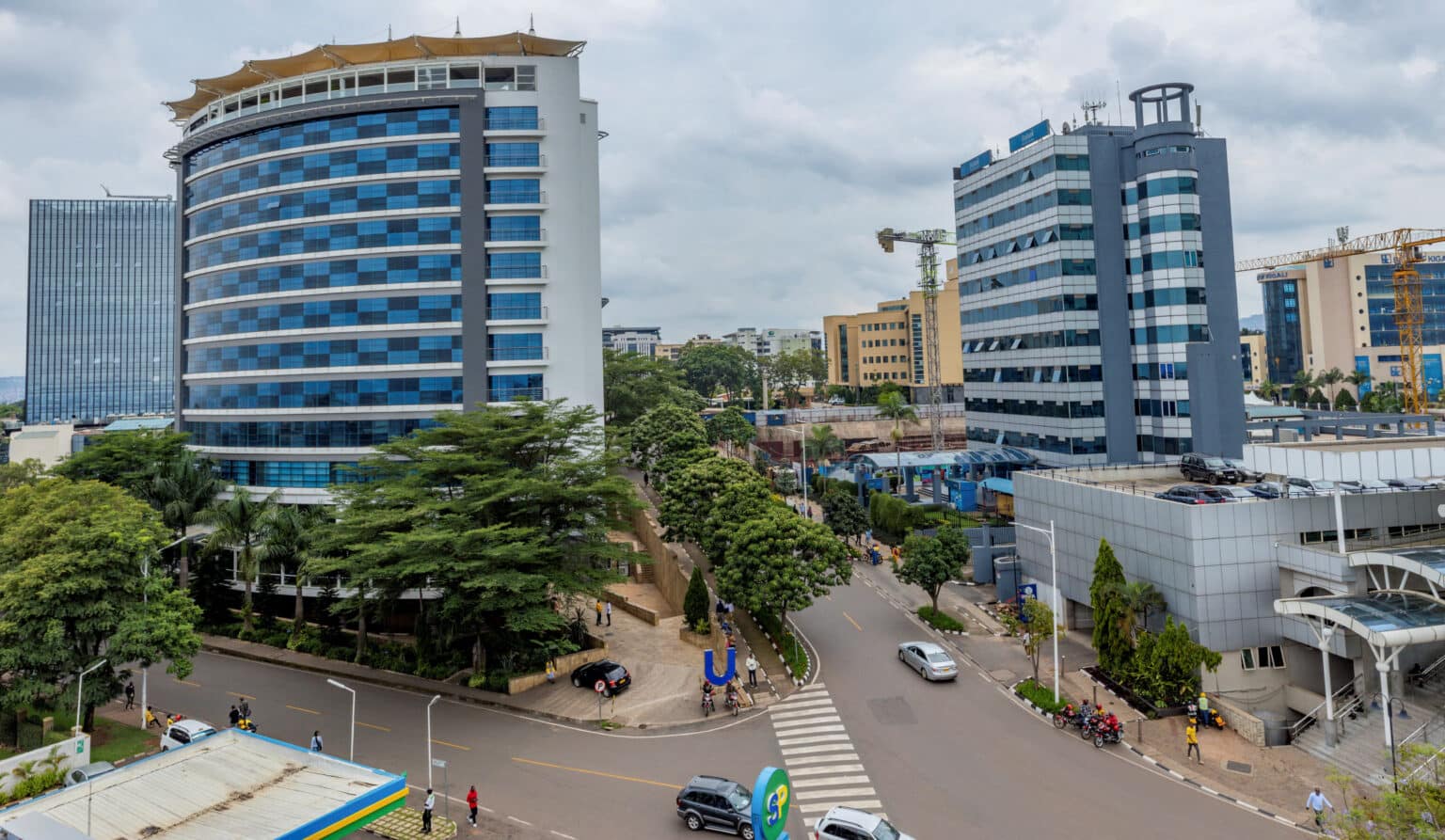Rwanda Raises Rate to 6.75% to Keep Inflation Within Range

The National Bank of Rwanda increases its Central Bank Rate to 6.75 percent
On August 20th, 2025, the Monetary Policy Committee (MPC) met to set the Central Bank Rate (CBR) for the next three months. This rate serves as a benchmark for commercial banks, guiding the cost of borrowing and lending. It is the main tool used by the National Bank of Rwanda to control inflation and support macroeconomic stability.
In the second quarter of 2025, inflation remained within the expected range of 2 to 8 percent. It is expected to average around 7.1 percent this year and decline to about 5.6 percent in 2026. However, these projections, which have been revised upward, are prone to inflationary risks, including adverse weather conditions that might affect future agriculture production, international commodity and trade uncertainties that affect global inflation developments.
Based on the current forecasts, the MPC decided to increase the CBR by 25 basis points to 6.75 percent, a level considered adequate to keep inflation within the target range.
The domestic economy continues to show resilience despite the global trade dynamics
Rwanda's economy recorded strong growth in the first quarter of 2025, with real GDP
reaching 7.8 percent. This growth was driven by robust performances in services, industry, and moderate performance in agriculture.
Despite global trade dynamics, high-frequency indicators show continuous strong
performance in 2025Q2, primarily driven by strong activity in the industry and services
sectors. The Composite Index of Economic Activity (CIEA) rose by 12.5 percent year-on-year in the second quarter of 2025, mainly supported by strong financing from the banking sector.
Rwanda's Trade Deficit decreased driven by robust export growth In the second quarter of 2025, merchandise exports increased by 15.5 percent, primarily driven by strong performances in coffee and mineral exports in terms of volume, alongside favorable global prices. In addition, non-traditional exports recorded notable gains, rising by 31.1 percent, driven mainly by cooking oil and wheat flour, further strengthening the overall export performance. In contrast, re-exports declined by 13.2 percent, reflecting decreasing
demand from the region.
On the import side, merchandise imports recorded a moderate increase of 3.3 percent, driven by higher demand for core food items such as maize and cooking oil, construction raw materials, and vehicles. As a result, the external trade position improved, with the trade deficit narrowing by 2.9 percent in 2025Q2 compared to the same period in 2024.
The foreign exchange market pressures have reduced compared to last year
By the end of June 2025, the Rwandan Franc (FRW) depreciated by 2.96 percent against the U.S. dollar, compared to a depreciation of 3.73 percent in the same period of 2024.
This moderation was partially supported by improvement in the trade balance, the broader
weakening of the USD in global markets and domestic foreign exchange market reforms.
Money market interest rates declined following the trend set by the Central Bank Rate
The interbank rate decreased to an average of 6.31 percent in the second quarter of 2025, from 8.14 percent in 2024Q2. This decline followed a gradual reduction in the Central Bank
Rate (CBR) from 7.5 to 6.5 percent in May and August 2024. Additionally, the deposit rate
decreased by 42 basis points in 2025Q2 to 9.75 percent due to a decrease in term deposits.
Similarly, the average lending rate declined. The downward trend was observed in lending
rates for both individual and corporate loans, with an overall reduction to 15.97 percent in
2025Q2 compared to an average lending rate of 16.25 percent in 2024Q2.
Inflation is expected to average 7.1 percent in 2025 and 5.6 percent in 2026
In 2025Q2, headline inflation (year-on-year) stabilized at 6.7 percent, unchanged from the
previous quarter, mainly as a decline in core inflation neutralized increases in both fresh and energy infiation. Core inflation eased to 5.6 percent from 6.1 percent, while fresh food and energy inflation rose to 12.4 percent from 11.2 percent and to -0.1 percent from -0.2 percent, respectively. The decline in core inflation originates from the phasing out of the shock recorded in transport services prices, last year. Fresh food inflation surged primarily due to higher vegetable prices driven by seasonal agricultural patterns. Conversely, energy deflation slightly contracted, driven by higher solid fuels inflation.
In the medium-term, headline inflation has been revised upward but is expected to remain
within the target band, averaging 7.1 percent in 2025 and 5.6 percent in 2026. The revision relative to the May 2025 MPC projections is mainly due to the impact of seasonal lower agriculture production, effects of adjustments in certain administered prices as well as fiscal measures aimed at supporting domestic revenue mobilization while also covering higher service quality and cost changes. Taking these changes into consideration, headline inflation is still expected to remain within the target band in the medium term.
Nevertheless, these projections are subject to risks. On the domestic side, adverse weather conditions may negatively affect agricultural production. Externally, changes in international trade policies and supply chain challenges emanating from global geopolitical tensions could impact international commodity prices.